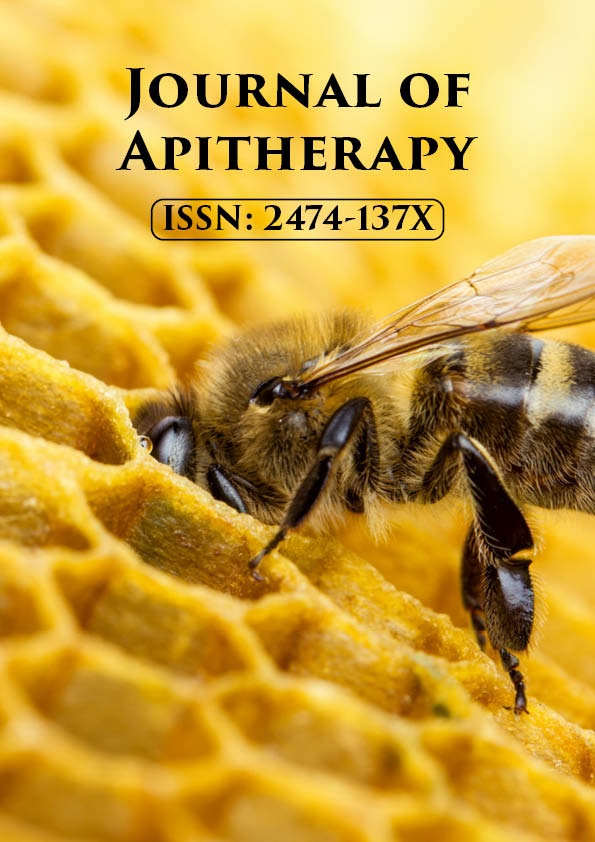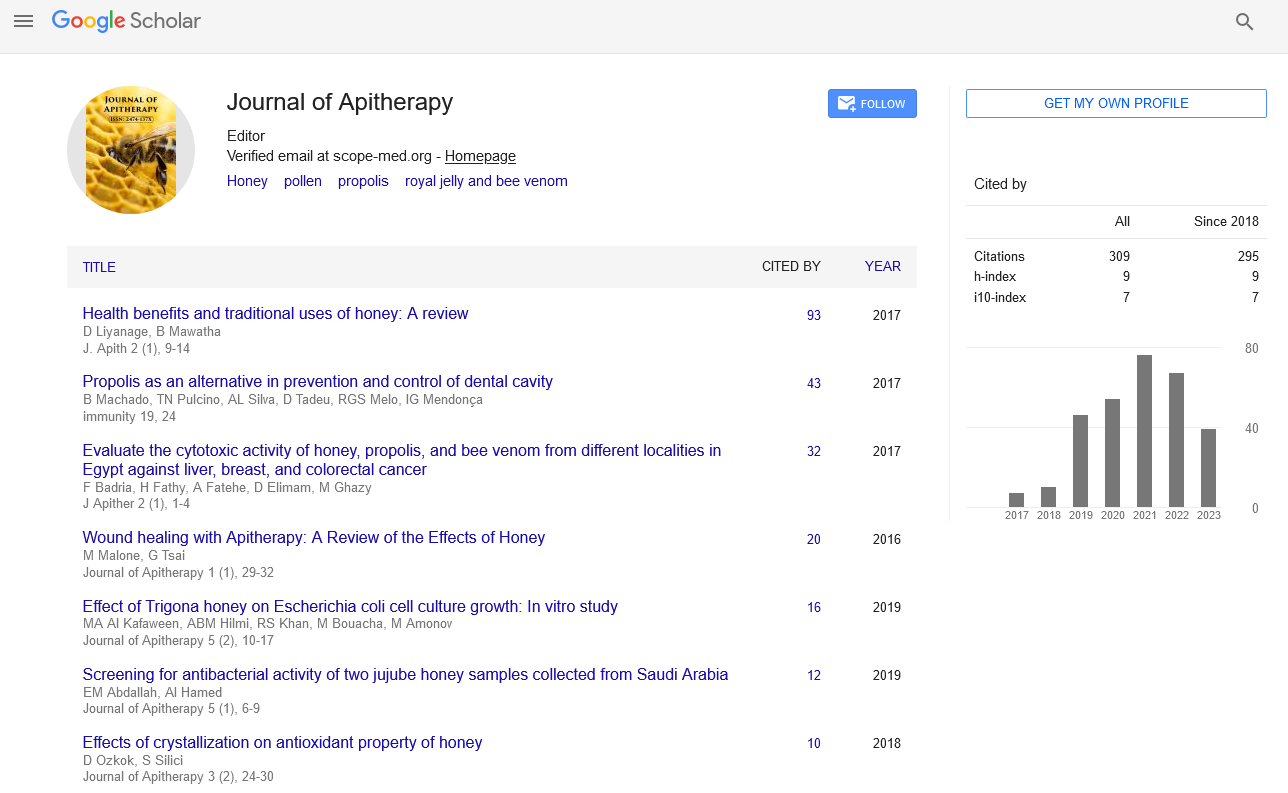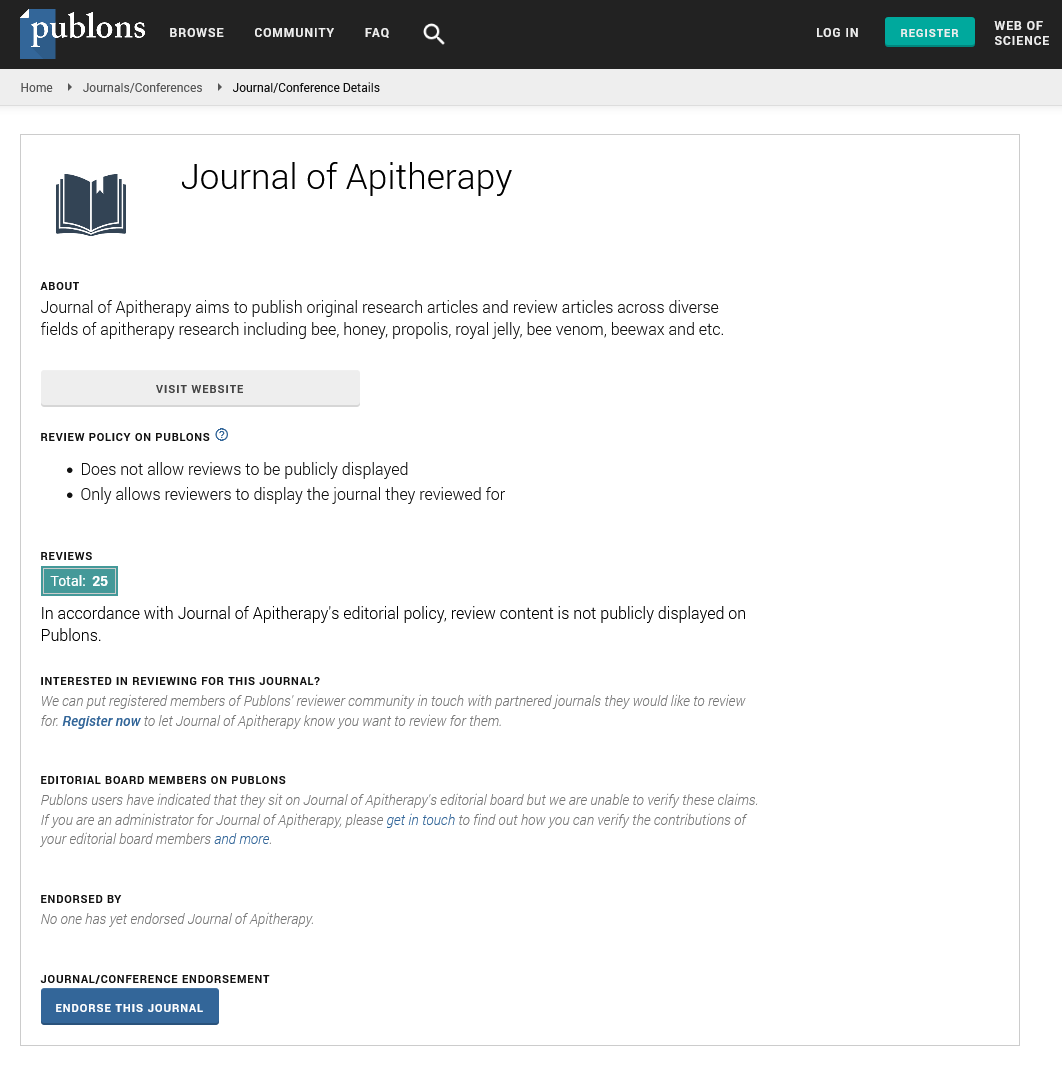Opinion - Journal of Apitherapy (2024)
Role Royalactin’s in Bee Development, Mechanism and Potential Biomedical Applications
Mia Wilson*Mia Wilson, Department of Forensic Medicine and Toxicology, Zagazig University, Zagazig, Egypt, Email: Mia@gmail.com
Received: 26-Apr-2024, Manuscript No. JAPITHERAPY-24-138908; Editor assigned: 29-Apr-2024, Pre QC No. JAPITHERAPY-24-138908 (PQ); Reviewed: 14-May-2024, QC No. JAPITHERAPY-24-138908; Revised: 21-May-2024, Manuscript No. JAPITHERAPY-24-138908 (R) ; Published: 28-May-2024
Description
Royalactin is a fascinating protein that plays a pivotal role in the development of honeybee queens. Discovered in the early 21st century, royalactin has garnered significant attention for its unique ability to influence the developmental fate of honeybee larvae. Beyond its role in bee development, royalactin has potential implications for other areas of biology and medicine, making it a subject of considerable scientific interest.
The discovery and role of royalactin
Royalactin was identified in 2011 by a team of researchers led by Masaki Kamakura. The study, published in the journal Nature, revealed that royalactin is a major component of royal jelly, a secretion produced by worker bees to nourish the queen bee and young larvae. Royal jelly is important in determining whether a larva will develop into a queen or a worker bee.
In honeybee colonies, all larvae are initially fed royal jelly. However, only those destined to become queens continue to receive this nutrient-rich substance beyond the first few days of life. The presence of royalactin in their diet triggers a cascade of developmental changes that result in the queen’s larger size, longer lifespan, and fully developed reproductive organs.
Mechanisms of action
Royalactin exerts its effects through a series of complex biological pathways. It acts by binding to the Epidermal Growth Factor Receptor (EGFR) on the surface of cells, which activates signaling pathways that promote cell growth, differentiation, and longevity. This interaction with EGFR is important for the development of queen-specific characteristics.
Cell growth and differentiation: Royalactin stimulates the growth of cells and their differentiation into specialized tissues. This process is vital for the development of the queen’s ovaries and other reproductive structures.
Longevity: The protein also influences lifespan by enhancing the expression of genes associated with longevity and reducing oxidative stress. This is why queen bees live significantly longer than worker bees.
Reproductive development: Royalactin’s impact on gene expression and cell signaling ensures the proper development of the queen’s reproductive system, enabling her to lay thousands of eggs throughout her life.
Potential implications beyond honeybees
The discovery of royalactin’s effects on honeybee development has sparked interest in its potential applications in other fields. Researchers are analyzing whether similar proteins or mechanisms could influence growth and development in other organisms, including humans.
Biomedical research: Understanding how royalactin interacts with EGFR could provide insights into new therapeutic strategies for regenerative medicine and aging. For instance, mimicking the pathways activated by royalactin might help in tissue repair and combating age-related diseases.
Agriculture: Enhancing the growth and resilience of other beneficial insects through royalactin-like proteins could improve pollination and crop yields. This application is particularly relevant as global pollinator populations face decline.
Biotechnology: The study of royalactin could lead to the development of bioengineered compounds that promote health and longevity. These compounds might be used in supplements or skincare products designed to mimic the anti-aging effects seen in queen bees.
Royalactin is a remarkable protein with profound effects on honeybee development, particularly in determining the fate of queen bees. Its discovery has opened up new avenues of research and potential applications in fields ranging from biomedicine to agriculture. While the promise of royalactin is immense, careful consideration of scientific, ethical, and environmental factors is essential to ensure its safe and effective use.
As research continues, royalactin may unlock new possibilities for enhancing health, longevity, and productivity in both insects and humans. The journey to fully understanding and harnessing this protein’s potential is just beginning, and it represents a fascinating intersection of natural biology and innovative science.







